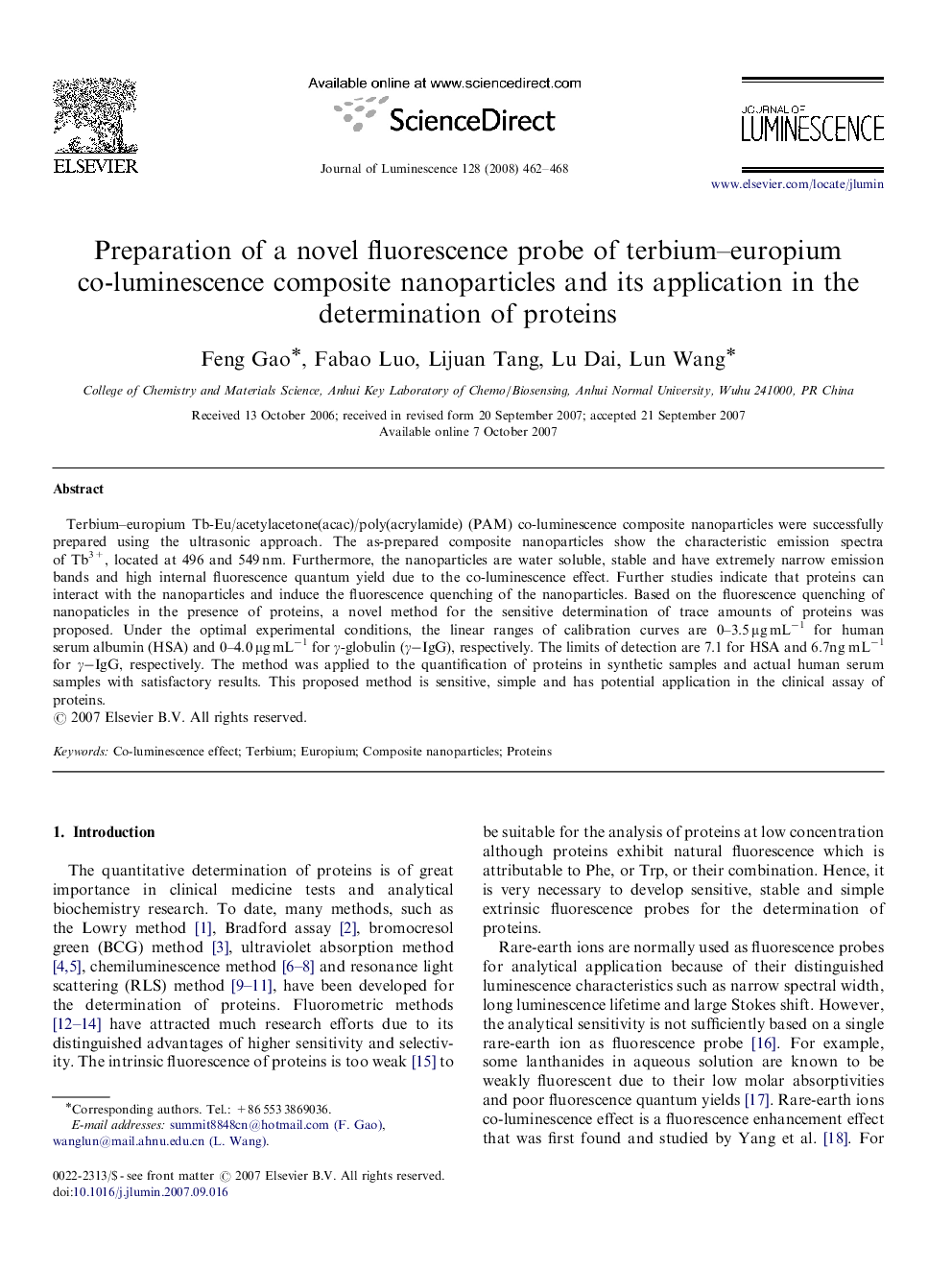| Article ID | Journal | Published Year | Pages | File Type |
|---|---|---|---|---|
| 5403813 | Journal of Luminescence | 2008 | 7 Pages |
Abstract
Terbium-europium Tb-Eu/acetylacetone(acac)/poly(acrylamide) (PAM) co-luminescence composite nanoparticles were successfully prepared using the ultrasonic approach. The as-prepared composite nanoparticles show the characteristic emission spectra of Tb3+, located at 496 and 549 nm. Furthermore, the nanoparticles are water soluble, stable and have extremely narrow emission bands and high internal fluorescence quantum yield due to the co-luminescence effect. Further studies indicate that proteins can interact with the nanoparticles and induce the fluorescence quenching of the nanoparticles. Based on the fluorescence quenching of nanopaticles in the presence of proteins, a novel method for the sensitive determination of trace amounts of proteins was proposed. Under the optimal experimental conditions, the linear ranges of calibration curves are 0-3.5 μg mLâ1 for human serum albumin (HSA) and 0-4.0 μg mLâ1 for γ-globulin (γâIgG), respectively. The limits of detection are 7.1 for HSA and 6.7ng mLâ1 for γâIgG, respectively. The method was applied to the quantification of proteins in synthetic samples and actual human serum samples with satisfactory results. This proposed method is sensitive, simple and has potential application in the clinical assay of proteins.
Related Topics
Physical Sciences and Engineering
Chemistry
Physical and Theoretical Chemistry
Authors
Feng Gao, Fabao Luo, Lijuan Tang, Lu Dai, Lun Wang,
